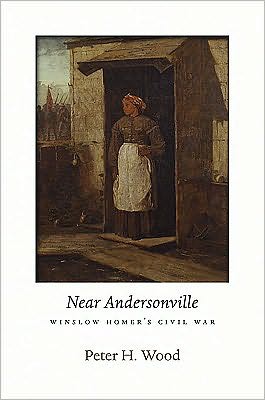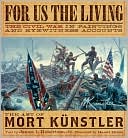Near Andersonville: Winslow Homer's Civil War
The admired American painter Winslow Homer rose to national attention during the Civil War. But one of his most important early images remained unknown for a century. The renowned artist is best known for depicting ships and sailors, hunters and fishermen, rural vignettes and coastal scenes. Yet he also created some of the first serious black figures in American art. Near Andersonville (1865–66) is the earliest and least known of these impressive images.\ Peter Wood, a leading expert on...
Search in google:
The admired American painter Winslow Homer rose to national attention during the Civil War. But one of his most important early images remained unknown for a century. The renowned artist is best known for depicting ships and sailors, hunters and fishermen, rural vignettes and coastal scenes. Yet he also created some of the first serious black figures in American art. Near Andersonville (1865–66) is the earliest and least known of these impressive images.Peter Wood, a leading expert on Homer’s images of blacks, reveals the long-hidden story of this remarkable Civil War painting. His brisk narrative locates the picture in southwest Georgia in August 1864 and provides its military and political context. Wood underscores the agony of the Andersonville prison camp and highlights a huge but little-known cavalry foray ordered by General Sherman as he laid siege to Atlanta. Homer’s image takes viewers “behind enemy lines” to consider the utter failure of “Stoneman’s Raid” from the perspective of an enslaved black Southerner.By examining the interplay of symbolic elements, Wood reveals a picture pregnant with meaning. He links it to Abraham Lincoln’s presidential campaign of 1864 and underscores the enduring importance of Homer’s thoughtful black woman. The painter adopted a bottom-up perspective on slavery and emancipation that most scholars needed another century to discover. By integrating art and history, Wood’s provocative study gives us a fresh vantage point on Homer’s early career, the struggle to end slavery, and the dramatic closing years of the Civil War.
Introduction 11 The Picture in the Attic 32 Behind Enemy Lines 283 The Woman in the Sunlight 60Abbreviations 91Notes 93Acknowledgments 125Index 129
\ Art New EnglandIn Near Andersonville, Wood tells the captivating story of an abandoned painting with the meticulousness of a historian and the panache of a novelist. More than just an enigmatic painting, Near Andersonville is a testament to the passions of white abolitionists, and the halting confusion of the freed slaves they cared for. This short book is a quick, learned, and touching read.\ — Leah Triplett\ \ \ \ \ \ Books & CultureIn his engrossing book by the same name, Wood argues that [Homer's] Near Andersonville "explores the question" of "What happens...if any part of the Civil War drama is viewed explicitly from the vantage point of the enslaved." Wood offers an illuminating, if at times speculative, reading of the image...His careful reconstruction of the painting's provenance, and his account of the discovery of the painting's title, are every bit as rewarding as his careful analysis of the visual symbolism of the painting itself.\ — Lauren Winner\ \ \ \ New England Quarterly[A] jewel of a book...This study began as a series of Nathan Huggins Lectures at Harvard, and it reads just like a really good lecture: engaging, informative, easy to listen to, and fully thought provoking. Wood, no stranger to Homer, having coauthored a study of the painter's images of African Americans in 1988, accomplishes the deceptively difficult task of making a subject about which he knows a great deal entirely accessible to anyone who wants to pick up this book.\ — Steven Conn\ \ \








